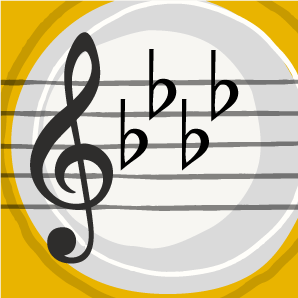´╗┐Fu─ı├¡k, Julius - Entry of the Gladiators
Free Sheet music for Alto Saxophone
Download Score PDF
(8notes Premium)
Arrangements of this piece also available for:
- Baritone Horn
- Bassoon
- Cello
- Clarinet
- Clarinet Choir
- Euphonium
- Flexible Brass (5)
- Flexible Mixed (4)
- Flexible Mixed (5)
- Flute
- Flute Choir
- Flute-Clarinet Duet
- French Horn
- Oboe
- Percussion (Xylophone)
- Piano
- Recorder - Soprano (Descant)
- String Quartet
- Tenor Saxophone
- Trombone
- Trumpet
- Tuba
- Viola
- Viola
- Violin
- Violin
- Wind Quintet
Request New Version
-
Download MP3
Piano Playalong MP3
Eb major Transposition E major Transposition F major Transposition F# major Transposition G major Transposition Ab major Transposition A major Transposition Bb major Transposition B major Transposition C major Transposition C# major Transposition D major Transposition
About 'Entry of the Gladiators'
Artist:
Born:
18 July 1872
Died:
25 September 1916
The Artist:
Julius Fucik was a Czech composer and conductor of military bands. Today his marches are still played as patriotic music in the Czech Republic. However, his worldwide reputation rests on one work: his Opus 68 march, the Entrance of the Gladiators (Vjezd gladiatoru), which is universally recognized, often under the title Thunder and Blazes, as one of the most popular theme tunes for circus clowns.
Composed:
1897
Info:
"Entrance of the Gladiators" or "Entry of the Gladiators" (Czech: Vjezd gladi├ítor┼», German: Einzug der Gladiatoren) is a military march composed in 1897 by the Czech composer Julius Fu─ı├¡k. He originally titled it "Grande Marche Chromatique," reflecting the use of chromatic scales throughout the piece, but changed the title based on his personal interest in the Roman Empire.
In 1910 Canadian composer Louis-Philippe Laurendeau arranged "Entrance of the Gladiators" for a small band under the title "Thunder and Blazes", and sold this version throughout North America. It was during this period that the song gained lasting popularity as a screamer march for circuses, often used to introduce clowns. Today it is known mainly by this association, even though the title and composer are relatively obscure. Laurendeau's version was also transcribed for fairground organs.
In 1910 Canadian composer Louis-Philippe Laurendeau arranged "Entrance of the Gladiators" for a small band under the title "Thunder and Blazes", and sold this version throughout North America. It was during this period that the song gained lasting popularity as a screamer march for circuses, often used to introduce clowns. Today it is known mainly by this association, even though the title and composer are relatively obscure. Laurendeau's version was also transcribed for fairground organs.
Tempo Marking:
Quick March  = c. 200
= c. 200
Duration:
2:50
Time Signature:
2/2 ( View more 2/2 Music)
View more 2/2 Music)
Range:
F4-Bb5
Score Key:
Ab major (Sounding Pitch) F major (Alto Saxophone in Eb) ( View more Ab major Music for Saxophone )
View more Ab major Music for Saxophone )
Score Type:
Arrangement for Saxophone and Piano
Number of Pages:
4
Difficulty:
Intermediate Level: Recommended for Intermediate Level players
Instrument:
Style:
Copyright:
© Copyright 2000-2025 Red Balloon Technology Ltd (8notes.com)
Info
You might also like:
Miau, Miau, Miau - Duetto Buffo di due Gatti (Comic Duet for Two Cats) by Diana Ross
March from Nutcracker by Pyotr Ilyich Tchaikovsky
La Cucaracha (Mexico) by Trad.
Entry of the Gladiators by Julius Fucik
The Elephant (from Carnival of the Animals) by Camille Saint-Saens
Theme from A Musical Joke K.522 by Wolfgang Amadeus Mozart
March from Nutcracker by Pyotr Ilyich Tchaikovsky
La Cucaracha (Mexico) by Trad.
Entry of the Gladiators by Julius Fucik
The Elephant (from Carnival of the Animals) by Camille Saint-Saens
Theme from A Musical Joke K.522 by Wolfgang Amadeus Mozart












